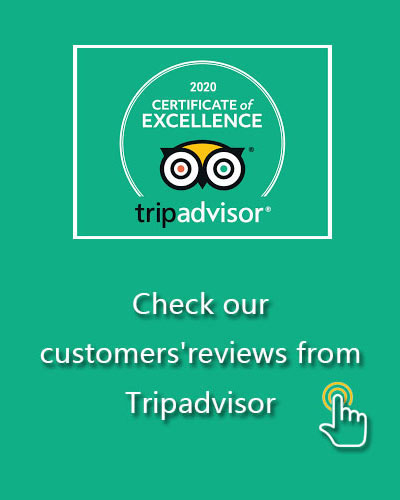South Korea Travel Tips
Owning the capital with traditional beauty, the prosperous metropolis, distinctive cuisine, highly developed public transportation, old Buddhist temples, imperial palaces. and perfect service industry, makes South Korea a top travelling destination all over the world. In order to help you plan your Korea journey, we have created this list of South Korea travel tips.
Best Time to Visit South Korea
In South Korea, the seasons are markedly pronounced. From June to August, it is very hot and humid, and from December to February, it is freezing and dry. The best weather is from September to November and from March to May, with warm weather, sunny blue skies, and a cool breeze. If you enjoy winter sports like skiing or sledding, the near-freezing temperatures in the winter months are great for sustaining beautiful powdery snow. In the summer, it is often unbearably humid and too crowded in the country, and prices are much higher in hotels and some attractions since it is designated as the tourist season. When the soft autumn winds make their way into the country, they bring clear, comfortable weather. We recommend centering your traveling plans on the month of October.
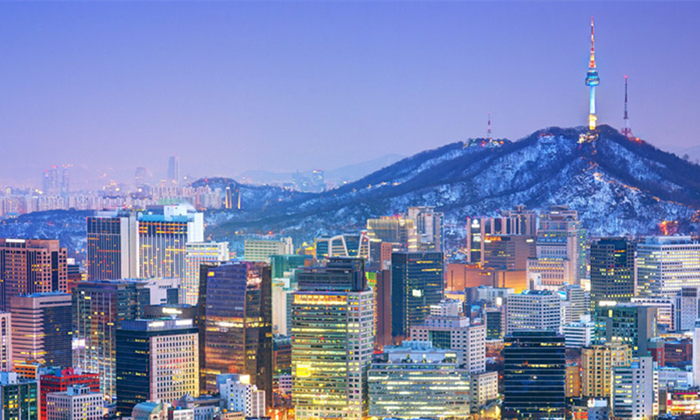
Money Matters
The Korean Won is the official currency of South Korea. Each won is divided into 100 jeon, but you will rarely see these smaller units unless you are looking at currency exchange rates. There are many places to exchange your foreign currency in the country such as at most shopping areas, so you do not have to worry about exchanging all of your money at the airport. You can also use your credit card to exchange for any amount of won in many locations. By law, all sellers must accept credit cards, and South Korean citizens use credit cards at one of the highest rates in the world. In spite of this, to avoid transaction fees, some sellers prefer cash transactions and will often give a small discount if you pay with cash. However, this does not normally apply to the major department stores in the country's shopping districts.
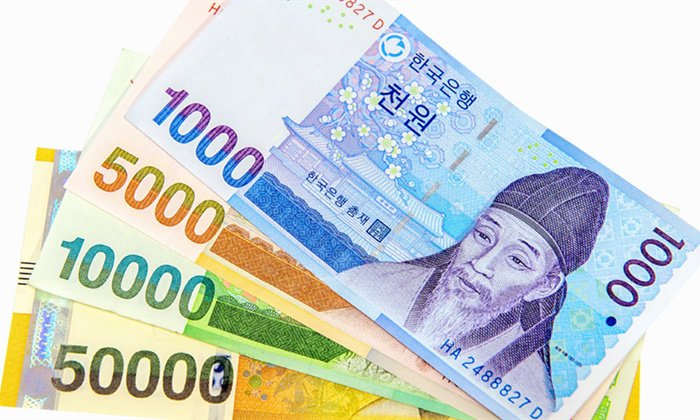
How to Behave
Etiquette is extremely important in South Korea, and it is based on the core values of Korean Confucianism. Most customs apply to the whole country, but there are also local variations and foreign influences. It is customary to greet by bowing, but sometimes a handshake is included. Korean women might nod slightly when seeing a foreigner. At Korean restaurants, be aware that there is usually a button on the corner of your table that will call the server if you need anything at all. When eating with Koreans at Korean restaurants, there are a few key things to remember. Always try to pour drinks of elders before pouring your own. Drink your soup before eating any of your other dishes. Do not leave your chopsticks sticking out of your rice dish. Last, do not leave any food on your spoon when you are eating. Remember these, and your Korean host will be highly pleased at your respect of their customs.
Food and Drink
Korean cuisine is distinct from other Asian countries, but visitors usually end up loving it by the middle of their trip. Locals love to eat spicy and fermented dishes, liberally using chiles and garlic to season local delicacies like raw fish. The focus of the Korean meal is rice and soup, usually with a meat or fish dish. It is culinary tradition to serve a large number of side dishes, which are called 'asbanchan' and include kimchi, dried fish, spinach, bean sprouts, and many others. Food is definitely an important part of local culture. The country's national drink is soju. This drink reminds many of vodka and is very strong, with an alcohol content around 20%. It is also extremely cheap in the country; you can buy a large bottle for 1,000 won at convenience stores and less than 3,000 won at bars.
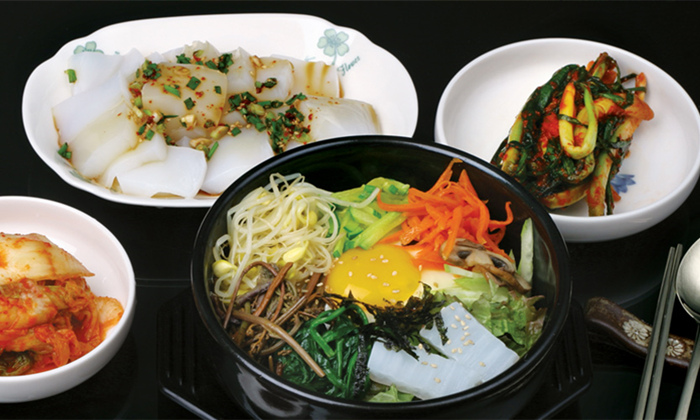
Safety and Health in South Korea
Throughout the South Korea, crime rates are consistently low and the country is generally a safe destination for most foreign travelers. South Korea has not experienced any terrorist incidents in recent history; nevertheless, as with anywhere, there may always be the possibility of a 'lone-wolf attack' or transnational terrorist organization attempts to operate in the country. South Korea boasts an affordable and accessible universal healthcare system, rated by 2016 Bloomberg report as the world's fourth most efficient health care system, after only those of Hong Kong, Singapore and Spain. In South Korea, quality healthcare is available through general hospitals, public health centers and private hospitals. The medical facilities exist in three tiers, depending on the size and number of departments. Additionally, Korean cuisine includes a variety of soup and stew dishes full of healthy ingredients, bone broth, plenty of vegetables, lean proteins, often simmered with fortifying herbs and roots.
Shopping in South Korea
When preparing for a trip to South Korea, remember that you really do not need to take much with you; the country is one of the world’s premier shopping destinations. Especially in Seoul and Busan, you will find international brands of luxury goods, cosmetics, fashion, and so many other things. Westerners are not often aware that the world’s largest department store is in Busan, and Lotte and Shinsegae are the two most popular department stores in major Korean cities. Most department stores offer countless Western and Korean-produced items, and some even have their own grocery stores. It is good to note when the stores are offering discounts to get the best savings, but the country’s prices are already comparable to those offered at popular North American stores. It is important to remember that, unlike in many other Asian countries, haggling is not very common in South Korea. If you plan on shopping in this nation, we recommend only buying things you can’t get in your country, as it could be difficult to get everything back home.
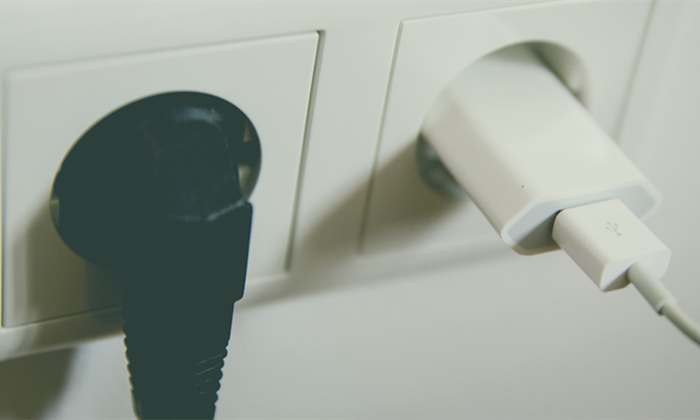
Electrical Plugs and Voltages
In South Korea, the standard electrical outlet has two round holes and provides 220v (60 Hertz). If you are using a device that is not made for this higher voltage, do not plug it in to a Korean wall socket without employing the mediation of a multi-voltage travel adaptor. In the event that you do not have an adaptor, the hotel reception will usually provide one free of charge. Because the electrical frequency in South Korea is 60Hz, it is not advisable to use the appliances that are made to function at a different frequency. Take extra precaution with moving, rotating and time-related appliances, such as clocks, shavers, electrics fan heaters. South Korea electrical sockets (outlets) are identical to one of the two European standard electrical socket types: the "Type C" Europlug and the "Type E" and "Type F" Schuko. If your appliance's plug does not match the two round hole shape of these sockets, you will need a travel plug adaptor to connect your device.
Owning the capital with traditional beauty, the prosperous metropolis, distinctive cuisine, highly developed public transportation, old Buddhist temples, imperial palaces. and perfect service industry, makes South Korea a top travelling destination all over the world. In order to help you plan your Korea journey, we have created this list of South Korea travel tips.
Best Time to Visit South Korea
In South Korea, the seasons are markedly pronounced. From June to August, it is very hot and humid, and from December to February, it is freezing and dry. The best weather is from September to November and from March to May, with warm weather, sunny blue skies, and a cool breeze. If you enjoy winter sports like skiing or sledding, the near-freezing temperatures in the winter months are great for sustaining beautiful powdery snow. In the summer, it is often unbearably humid and too crowded in the country, and prices are much higher in hotels and some attractions since it is designated as the tourist season. When the soft autumn winds make their way into the country, they bring clear, comfortable weather. We recommend centering your traveling plans on the month of October.

Money Matters
The Korean Won is the official currency of South Korea. Each won is divided into 100 jeon, but you will rarely see these smaller units unless you are looking at currency exchange rates. There are many places to exchange your foreign currency in the country such as at most shopping areas, so you do not have to worry about exchanging all of your money at the airport. You can also use your credit card to exchange for any amount of won in many locations. By law, all sellers must accept credit cards, and South Korean citizens use credit cards at one of the highest rates in the world. In spite of this, to avoid transaction fees, some sellers prefer cash transactions and will often give a small discount if you pay with cash. However, this does not normally apply to the major department stores in the country's shopping districts.

How to Behave
Etiquette is extremely important in South Korea, and it is based on the core values of Korean Confucianism. Most customs apply to the whole country, but there are also local variations and foreign influences. It is customary to greet by bowing, but sometimes a handshake is included. Korean women might nod slightly when seeing a foreigner. At Korean restaurants, be aware that there is usually a button on the corner of your table that will call the server if you need anything at all. When eating with Koreans at Korean restaurants, there are a few key things to remember. Always try to pour drinks of elders before pouring your own. Drink your soup before eating any of your other dishes. Do not leave your chopsticks sticking out of your rice dish. Last, do not leave any food on your spoon when you are eating. Remember these, and your Korean host will be highly pleased at your respect of their customs.
Food and Drink
Korean cuisine is distinct from other Asian countries, but visitors usually end up loving it by the middle of their trip. Locals love to eat spicy and fermented dishes, liberally using chiles and garlic to season local delicacies like raw fish. The focus of the Korean meal is rice and soup, usually with a meat or fish dish. It is culinary tradition to serve a large number of side dishes, which are called 'asbanchan' and include kimchi, dried fish, spinach, bean sprouts, and many others. Food is definitely an important part of local culture. The country's national drink is soju. This drink reminds many of vodka and is very strong, with an alcohol content around 20%. It is also extremely cheap in the country; you can buy a large bottle for 1,000 won at convenience stores and less than 3,000 won at bars.

Safety and Health in South Korea
Throughout the South Korea, crime rates are consistently low and the country is generally a safe destination for most foreign travelers. South Korea has not experienced any terrorist incidents in recent history; nevertheless, as with anywhere, there may always be the possibility of a 'lone-wolf attack' or transnational terrorist organization attempts to operate in the country. South Korea boasts an affordable and accessible universal healthcare system, rated by 2016 Bloomberg report as the world's fourth most efficient health care system, after only those of Hong Kong, Singapore and Spain. In South Korea, quality healthcare is available through general hospitals, public health centers and private hospitals. The medical facilities exist in three tiers, depending on the size and number of departments. Additionally, Korean cuisine includes a variety of soup and stew dishes full of healthy ingredients, bone broth, plenty of vegetables, lean proteins, often simmered with fortifying herbs and roots.
Shopping in South Korea
When preparing for a trip to South Korea, remember that you really do not need to take much with you; the country is one of the world’s premier shopping destinations. Especially in Seoul and Busan, you will find international brands of luxury goods, cosmetics, fashion, and so many other things. Westerners are not often aware that the world’s largest department store is in Busan, and Lotte and Shinsegae are the two most popular department stores in major Korean cities. Most department stores offer countless Western and Korean-produced items, and some even have their own grocery stores. It is good to note when the stores are offering discounts to get the best savings, but the country’s prices are already comparable to those offered at popular North American stores. It is important to remember that, unlike in many other Asian countries, haggling is not very common in South Korea. If you plan on shopping in this nation, we recommend only buying things you can’t get in your country, as it could be difficult to get everything back home.

Electrical Plugs and Voltages
In South Korea, the standard electrical outlet has two round holes and provides 220v (60 Hertz). If you are using a device that is not made for this higher voltage, do not plug it in to a Korean wall socket without employing the mediation of a multi-voltage travel adaptor. In the event that you do not have an adaptor, the hotel reception will usually provide one free of charge. Because the electrical frequency in South Korea is 60Hz, it is not advisable to use the appliances that are made to function at a different frequency. Take extra precaution with moving, rotating and time-related appliances, such as clocks, shavers, electrics fan heaters. South Korea electrical sockets (outlets) are identical to one of the two European standard electrical socket types: the "Type C" Europlug and the "Type E" and "Type F" Schuko. If your appliance's plug does not match the two round hole shape of these sockets, you will need a travel plug adaptor to connect your device.
Related Articles You May Like
Most Frequently Asked Questions
Japan Office
- Tel: +81 50-3701-6391
- Email: info@japanholiday.com
- Working Hours: 8am-7pm, (Japan)
USA Office
- Tel: +1-6265617117
- Email: info@japanholiday.com
- Working Hours: 8am-7pm, Pacific Time

